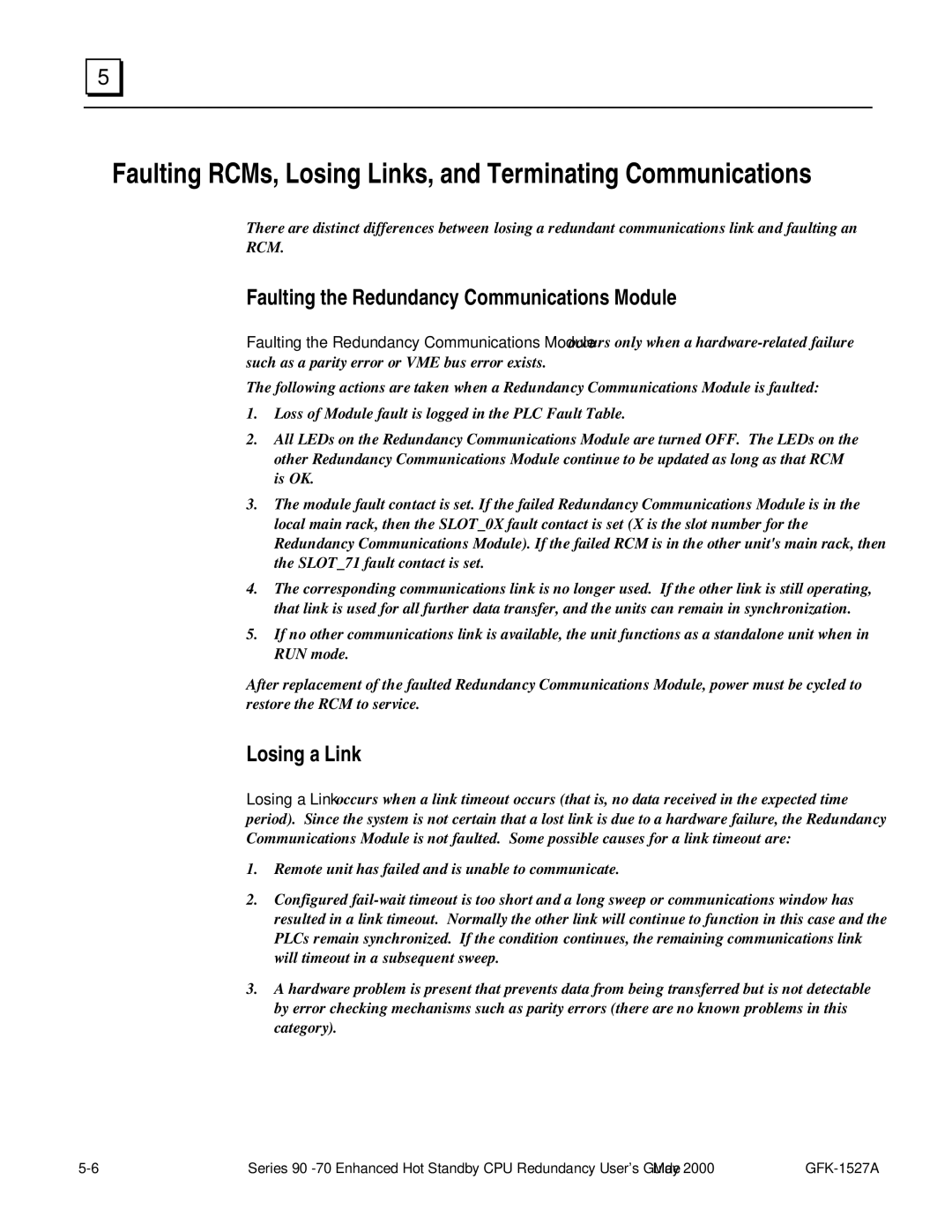5 |
Faulting RCMs, Losing Links, and Terminating Communications
There are distinct differences between losing a redundant communications link and faulting an RCM.
Faulting the Redundancy Communications Module
Faulting the Redundancy Communications Module occurs only when a
The following actions are taken when a Redundancy Communications Module is faulted:
1.Loss of Module fault is logged in the PLC Fault Table.
2.All LEDs on the Redundancy Communications Module are turned OFF. The LEDs on the other Redundancy Communications Module continue to be updated as long as that RCM is OK.
3.The module fault contact is set. If the failed Redundancy Communications Module is in the local main rack, then the SLOT_0X fault contact is set (X is the slot number for the Redundancy Communications Module). If the failed RCM is in the other unit's main rack, then the SLOT_71 fault contact is set.
4.The corresponding communications link is no longer used. If the other link is still operating, that link is used for all further data transfer, and the units can remain in synchronization.
5.If no other communications link is available, the unit functions as a standalone unit when in RUN mode.
After replacement of the faulted Redundancy Communications Module, power must be cycled to restore the RCM to service.
Losing a Link
Losing a Link occurs when a link timeout occurs (that is, no data received in the expected time period). Since the system is not certain that a lost link is due to a hardware failure, the Redundancy Communications Module is not faulted. Some possible causes for a link timeout are:
1.Remote unit has failed and is unable to communicate.
2.Configured
3.A hardware problem is present that prevents data from being transferred but is not detectable by error checking mechanisms such as parity errors (there are no known problems in this category).
Series |
